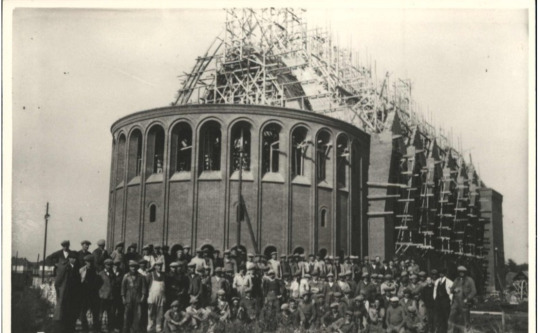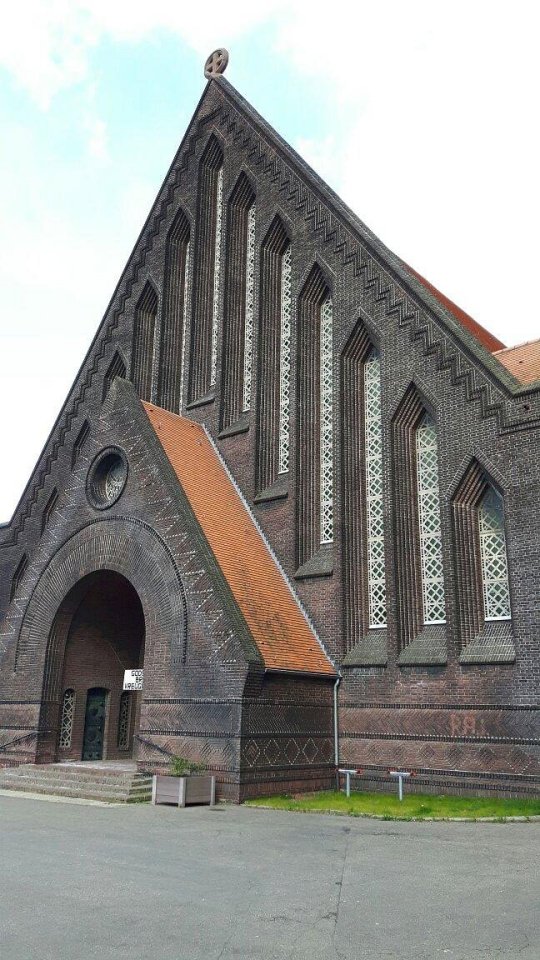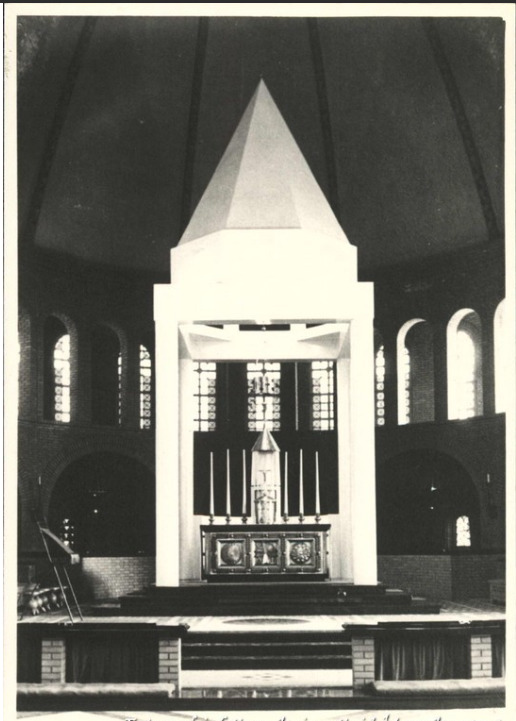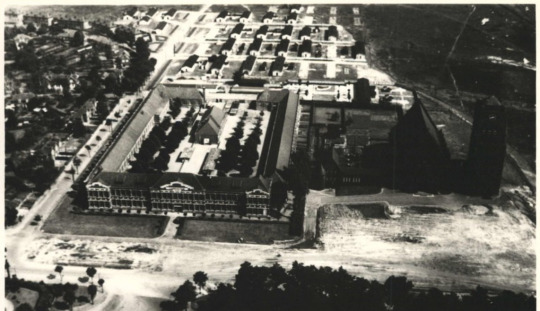#ChurchesInTheLandscape
Explore tagged Tumblr posts
Text

Why do people remain attached to churches even if they are no longer religious? Discover how the architecture and location of churches, as symbols of socio-cultural backgrounds and communities, maintain their allure.
The Sint-Albertuskerk in Zwartberg and the Sint-Theodarduskerk in Beringen-Mijn, both designed by architect H. Lacoste, initially appear similar in architecture. Both churches are imposing brick constructions with high pointed arch windows and stained glass. However, upon closer inspection, subtle differences emerge, emphasizing their unique character and functional nuances. A significant contrast between the two churches lies in their locations. The Sint-Albertuskerk in Zwartberg is centrally located among various neighborhoods with predominantly Italian, Turkish, and former Soviet Union immigrant populations, symbolizing its role as a unifying center. In contrast, the Sint-Theodarduskerk is situated in the heart of a specific community, mainly comprised of Turkish and North African immigrants.
The diversity of these communities is reflected in the architecture. Zwartberg, with its diverse socio-economic and cultural backgrounds, features a modest brick architecture that exudes a sense of neutrality. This contrasts with the Sint-Theodarduskerk in Beringen-Mijn, where the architecture evokes a sense of familiarity with its Byzantine style, fostering connection through parish complexes and galleries. This approach proves effective, as activities are organized in and around the church during the September mine celebrations by both the Christian and Islamic communities, as well as non-believers.
These churches demonstrate how architecture not only shapes physical space but also provides social and cultural meaning and function, tailored to the specific context of the community. A profound understanding of the interaction between architecture and socio-cultural aspects is essential to comprehend the unique identity and role of each church within its environment. Starting from here is crucial for transforming and designing churches for contemporary and future use, separate from religious connotations, without disregarding the local community.
Churches as Cultural Beacons: Architecture and Community PART II
#ArchitectureAndCommunity#ChurchesAsSymbols#CulturalHeritage#ArchitecturalTheory#ReligiousHistory#SocioCulturalBackground#ChurchesInTheLandscape#ArchitecturalSymbolism#FutureOfChurches#CommunityConnections#ArchitectuurEnGemeenschap#KerkenAlsSymbolen#CultureelErfgoed#ArchitectuurTheorie#ReligieusVerleden#SociaalCultureleAchtergrond#KerkenInHetLandschap#ArchitectonischeSymboliek#ToekomstVanKerken#CommunityConnecties
0 notes
Text







In Western Europe, declining church attendance leaves many churches vacant. As these historic structures decay, communities seek adaptable spaces. After attending a masterclass on managing religious heritage in secular societies, I explore an active church to understand why these churches still hold significance in our secular communities.
The church we're focusing on is within my reference frame: the Sint-Albertus Church in Zwartberg, Limburg (Belgium). Amidst the industrial mining legacy of Mid-Limburg, the Sint-Albertus church emerges as a testament to tradition, resilience, and community. Originally built for nearby coal mine workers, it was commissioned by mining communities and constructed to serve the predominantly Catholic population's religious needs, symbolizing welfare and endurance.
The architecture, characterized by dark robust brickwork and interconnected volumes including a nave, tower (with baptistery), and rectory (with caretaker's residence), reflects the grandeur of its purpose contrasting with the subdued atmosphere of the interior. Materialized with beautiful ceramic floor tiles and stained-glass windows, the church releases an aura of reverence and tranquility, enforcing introspection by its neutral space.
Located at the heart of Zwartberg between different neighbourhoods, the church fosters dialogue and connection among diverse communities, transcending cultural boundaries looking at the nearby Turkish and Italian church. Despite facing technical challenges over the years, including roof replacement and tower renovations, it remains a symbol of resilience and community spirit.
Should the church transition away from religious activities, preserving its legacy as an introspective space and enhancing dialogue and connection among communities, regardless of culture, religion, or background, is advisable. Historically, education and care were significant aspects, aligning with the building's core intent: to fulfill the elementary needs of a worker community.
Churches as Cultural Beacons: Architecture and Community part I
#ArchitectureAndCommunity#ChurchesAsSymbols#CulturalHeritage#ArchitecturalTheory#ReligiousHistory#SocioCulturalBackground#ChurchesInTheLandscape#ArchitecturalSymbolism#FutureOfChurches#CommunityConnections#ReligiousHeritage#ArchitecturalLegacy#CommunityUnity#CulturalDialogue#SpiritualSanctuary#HistoricLandmark#ZwartbergHeritage#BelgianReligiousHeritage#StudioKultuurscape#ChallengesofArchitecture#Architecture#kimberly wouters architect
0 notes